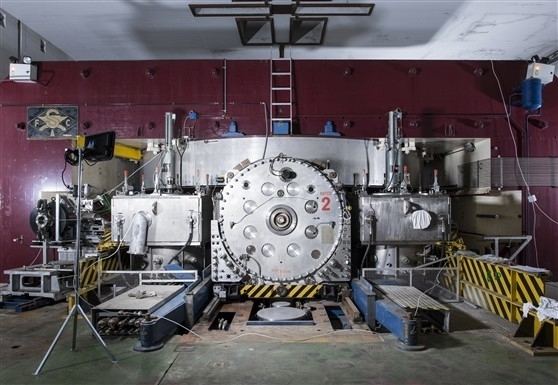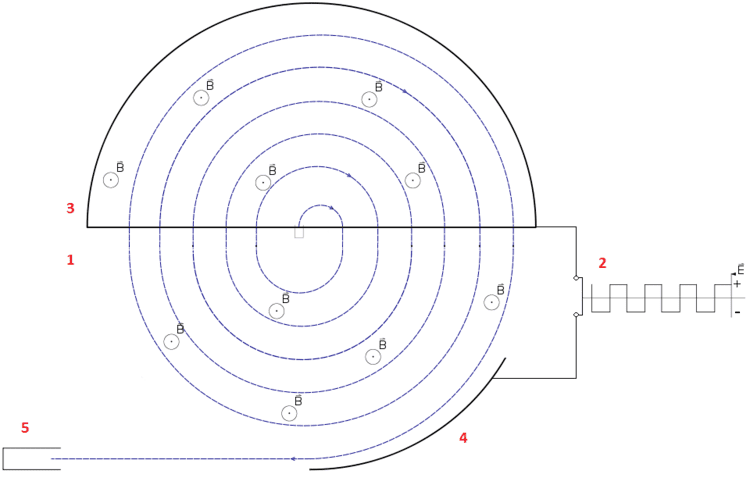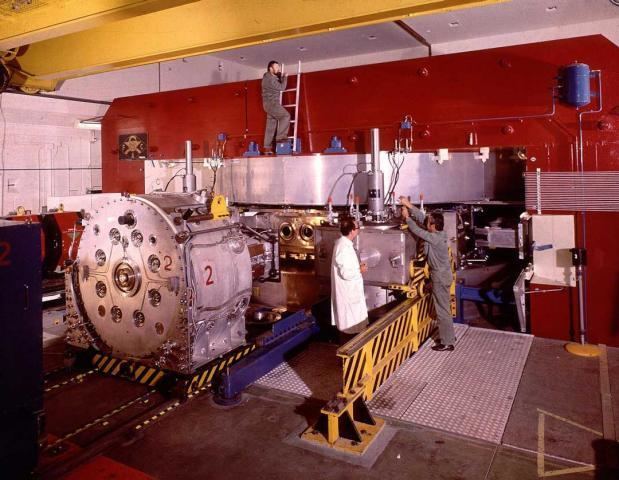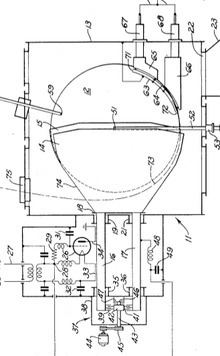 | ||
The synchrocyclotron
A synchrocyclotron is a special type of cyclotron, patented by Edwin McMillan, in which the frequency of the driving RF electric field is varied to compensate for relativistic effects as the particles' velocity begins to approach the speed of light. This is in contrast to the classical cyclotron, where this frequency is constant.
Contents
- The synchrocyclotron
- Cern synchrocyclotron particle accelerator
- Differences from the classical cyclotron
- Advantages
- Disadvantages
- Current developments
- References

There are two major differences between the synchrocyclotron and the classical cyclotron. In the synchrocyclotron, only one dee retains its classical shape, while the other pole is open (see patent sketch). Furthermore, the frequency of oscillating electric field in a synchrocyclotron is decreasing continuously instead of kept constant so as to maintain cyclotron resonance for relativistic velocities. One terminal of the oscillating electric potential varying periodically is applied to the dee and the other terminal is on ground potential. The protons or deuterons to be accelerated are made to move in circles of increasing radius. The acceleration of particles takes place as they enter or leave the dee. At the outer edge, the ion beam can be removed with the aid of electrostatic deflector. It was possible to produce 200 MeV deuterons and 400 MeV α-particles with the first synchrocyclotron.

Cern synchrocyclotron particle accelerator
Differences from the classical cyclotron
In a classical cyclotron, the angular frequency of the electric field is given by


Where

where

This is then the angular frequency of the field applied to the particles as they are accelerated around the synchrocyclotron.
Advantages
The chief advantage of the synchrocyclotron is that there is no need to restrict the number of revolutions executed by the ion before its exit. As such, the potential difference supplied between the dees can be much smaller.
The smaller potential difference needed across the gap has the following uses:
- There is no need for a narrow gap between the dees as in the case of conventional cyclotron, because strong electric fields for producing large acceleration are not required. Thus only one dee can be used instead of two, the other end of the oscillating voltage supply being connected to earth.
- The magnetic pole pieces can be brought closer, thus making it possible to increase greatly the magnetic flux density.
- The frequency valve oscillator is able to function with much greater efficiency.
Disadvantages
The main drawback of this device is that, as a result of the variation in the frequency of the oscillating voltage supply, only a very small fraction of the ions leaving the source are captured in phase-stable orbits of maximum radius and energy with the result that the output beam current has a low duty cycle, and the average beam current is only a small fraction of the instantaneous beam current. Thus the machine produces high energy ions, though with comparatively low intensity.
The next development step of the cyclotron concept, the isochronous cyclotron, maintains a constant RF driving frequency and compensates for relativistic effects by increasing the magnetic field with radius. Isochronous cyclotrons are capable of producing much greater beam current than synchrocyclotrons. As a result, isochronous cyclotrons became more popular in the research field.
Current developments
Synchrocyclotrons are attractive for use in proton therapy because of the ability to make compact systems using high magnetic fields. Medical physics companies Ion Beam Applications and Mevion Medical Systems have developed superconducting synchrocyclotrons that can fit comfortably into hospitals.
